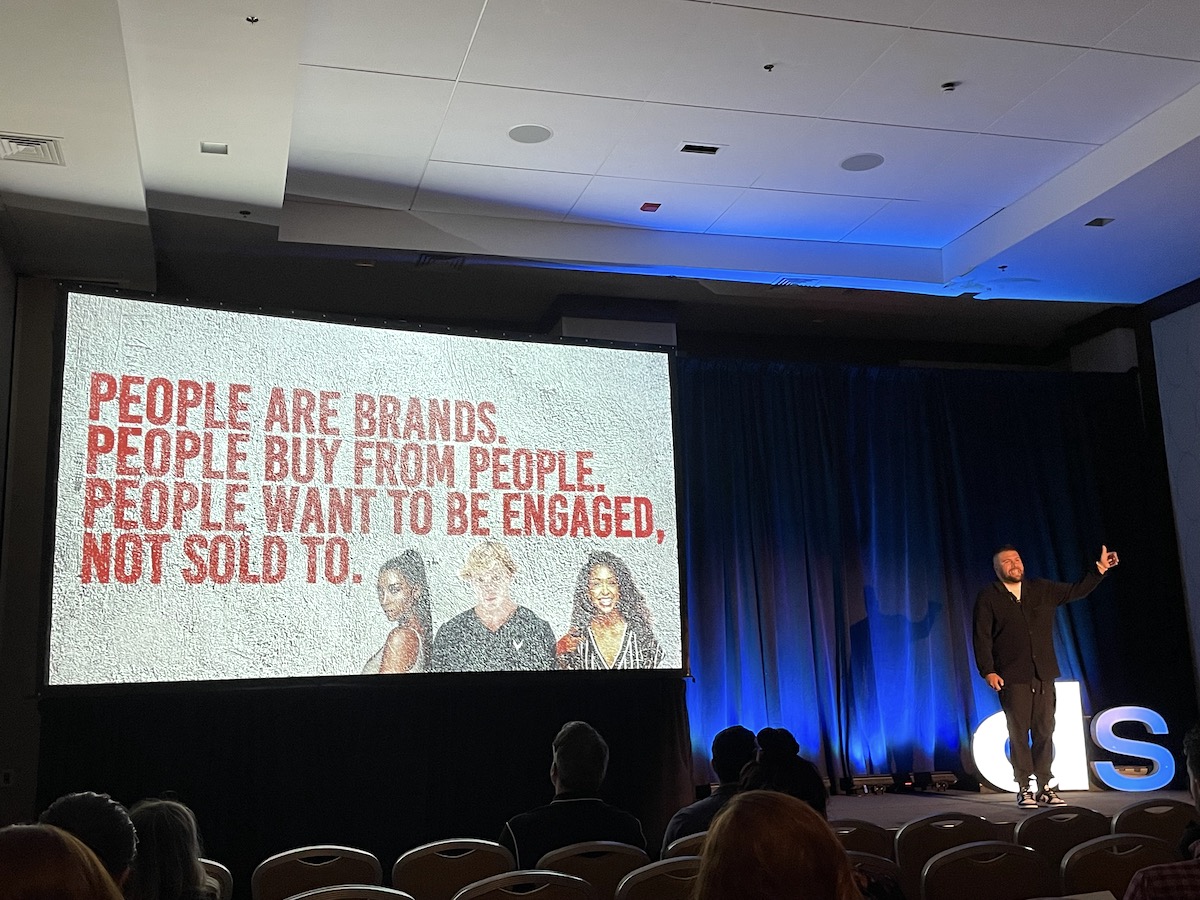Professional Development
Jun. 6, 2022 7:30 am
Advertisement
Carlos Gil presenting at Digital Summit Philadelphia 2022.
(Photo by Beth Ann Downey)
These are just a few of the questions answered by speakers at this year’s Digital Summit in Philadelphia, which took place May 23 to 24 in Center City. Though the annual conference series — which will be hosted in 16 additional cities throughout the rest of the year — is directed at digital marketers, it offered key takeaways that anyone working in the tech or entrepreneurial space could apply to their next project or their next workday.
These insights were provided by more than 30 established professionals representing companies such as Spotify, LinkedIn and Crayola, as well as agency and solutions founders and subject matter experts. Here are three trends that emerged across sessions:
Jenny Haggard’s keynote. (Photo via Audrey Surette)
Despite her position as senior global creative strategist at the world’s most popular audio streaming service, Spotify’s Jenny Haggard preached the power of silence in her keynote address at the conference. Divulging that she has nearly completed a three-year program to become a certified spiritual director, and that she takes an eight-day annual silent retreat every year, Haggard implored the importance of audio in the marketing space as well as silence in the brain space.
Advertisement
“In my experience, sound and silence actually complement each other,” she said. “They’re not enemies in creativity, they’re allies. When you practice one, you fuel the other.”
Her applicable advice? Seek out more silence in your day and in life, even if just for a minute or two. Those silent retreats are the most creative she feels all year, she said, and her journal entries from those time periods provide inspiration to continually refer back to.
“If we’re constantly surrounded by noise, then we have no quiet time, and if we have no quiet time, then we have no time to think and reflect and really tap into our thoughts,” she said. “Just two minutes in silence can relieve tension in the body and in the brain, and is actually more relaxing than listening to music. Do not tell my employer that I told you that.”
The value of physical goods often reaches its peak due to a mix of scarcity and brand-loyal community. This has become apparent — and perhaps even more heightened — when it comes to virtual goods and the metaverse. That’s what Carlos Gil, a Florida-based author and advisor on nonfungible tokens, outlined in his discussion at Digital Summit, along with why big brands and other companies are buying into the space.
Emerging metaverse trends might sound both intriguing and nonsensical to newcomers, Gil said, from owning your own island on NFT Worlds to waiting in line to build a virtual burrito a la Chipotle on Roblox. What’s encouraging and relatable, though, is how community builds around certain products to help bolster and self-regulate the burgeoning space, Gil said. As an example, he spoke of his initial encounter the Lazy Lions NFT community when he was first getting into NFTs himself.
“I tweeted out, ‘What NFT should I buy next?’ and immediately I started seeing tweets flood in from all these different accounts that had lions as their profile photos. I bought one, and that’s the moment I realized the power of community in this space, and also the value of community in this space,” he said.
Brands like Nike, Adidas and Pepsi are buying into high-profile NFTs not only as a flex, Gil added, but to tap into these established communities in new spaces and in an organic manner.
“The psychology as a marketer is now I don’t really have to work hard to get people to know my brand, I just have to buy into the right community,” Gil said.
Emerging technological spaces and trends mean that others start to fall by the wayside. Several of the Digital Summit presenters discussed how consumer behavior has changed since the pandemic, and how all businesses need to adapt in order to keep up.
“If you continue to do the things that you did prior to the pandemic, such as what I like to refer to as shotgun blasting content on social media, you will fail,” Gil said. “If you find ways to tap into new audiences, new communities, new spaces, you will thrive and succeed, but the manner by which you do this needs to change and evolve.”
He mentioned how Discord is the social network for the NFT space while other presenters discussed how podcasting and TikTok have eclipsed the “Big 3” social platforms in terms of modern engagement trends.
“I believe podcasts, audio, social audio — things like Clubhouse and Twitter Spaces — will be just as important to brands moving forward as your social media accounts were starting, maybe, 10 years ago,” said Chad Parizman of Ader Communications who presented on launching podcasts for brands. “Jenny [Haggard] basically said the same thing: Audio is going to be big for your brand, and if you’re not doing that now, you’re going to need to start doing it in the next few years.”
Juntae DeLane, founder and chief strategist of Digital DeLane, spoke about consumer behavior shifts in the “new normal,” including how time-based marketing logic must shift in the remote work environment, and how they are taking deeper dives into companies’ digital footprints. These trends will likely persist into a post-pandemic world, DeLane added, and the pandemic as well as other catalysts like the Black Lives Matter movement will continue to change how we communicate. One example? A buttoned-up brand voice is boring, DeLane urged, and should be reevaluated (while most notably mentioning the Wendy’s Twitter roasts).
“On social platforms, customers don’t want to be helped, they want to be engaged,” he said.
Advertisement


